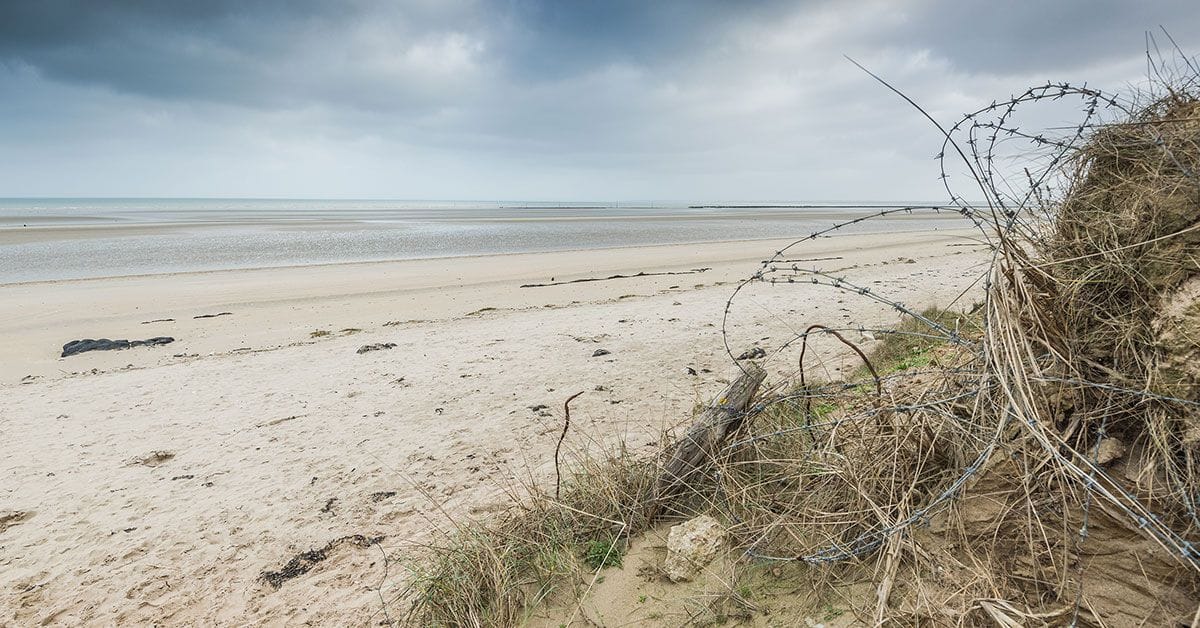Many human activities have a huge ecological impact—especially our wars, which scar landscapes and pour toxins into the environment. These effects can echo down the decades long after a conflict ends, and the options for clean-up are not always clean.

Submerged munitions from past wars are a threat to fisheries, shipping, and construction. When old mines or bombs are found, they are often detonated in a controlled explosion. But although this may make human activities safer, it distributes toxins and carcinogens within the marine ecosphere. It is estimated that millions of metric tons of dumped munitions and unexploded ordnance are in marine environments, mostly due to activities during and after the World Wars—especially World War II.1 But not all explosions are created equal: to minimize shock waves and protect marine life, low-order blasts use smaller amounts of explosive than high-order detonations, and the wider ecological impact of this has not been studied.
Now, new work published in Environmental Science & Technology has taken a closer look at the ecotoxicological risk of these war relics. The team collected water and sediment before and after the detonation of two World War II mines in the Baltic Sea, and they analyzed the samples for the presence of energetic compounds such as nitroaromatics—a group known for their toxicity and carcinogenicity.2
The results showed the concentration of these energetic compounds did increase after high-order detonation, but critically the low-order blast had a significantly higher burden on the marine environment. Although low-order detonation reduced shockwaves, the concentrations of energetic compounds in water and sediment afterwards were up to 1,000,000 ng/L and >10,000,000 μg/kg, compared to just 353 ng/L and 175 μg/kg for the high-order blast.
Energetic compounds aren’t the only issue: previous research has found traces of arsenic-containing agents and mustard gas products in sediment and fish near weapon disposal sites,3 as well as metallic mercury around submarine wreckage,4 which has been recorded in coral at 10-times the concentration in reef skeletons from the pre-industrial era.5
It seems incredible that these sites could have been allowed to remain in the environment for so long, but there is still often a sense that leaving dangerous items undisturbed is the safer option. And furthermore, the sites for many weapons dumps are classified.6 It is only recently that we are coming to terms with the risks of these abandoned munitions and realizing that, as they corrode, many are leaching chemicals into the water regardless of whether they are detonated or not. A further realization is that we do not fully understand the inherent physicochemical properties of some of these chemical warfare agents, and their fate and long-term toxicity risk have not been comprehensively characterized.
These new findings support the idea that controlled detonation operations lead to significant contamination of the marine environment, and pose an ecotoxicological risk. In principle, war machinery and munitions that have been dumped in the oceans should be recovered and disposed of in an environmentally friendly manner using appropriate procedures. The authors also suggest a need to reevaluate the damage from a perspective other than the immediate shock of the blast, since release of toxins into the water will have long-term effects on wider ecosystems and health.
References
- Beck, A. J. et al. In Situ Measurements of Explosive Compound Dissolution Fluxes from Exposed Munition Material in the Baltic Sea. Environ. Sci. Technol. 2019, 53, 10, 5652–5660.
- Maser, E. et al. Ecotoxicological Risk of World War Relic Munitions in the Sea after Low- and High-Order Blast-in-Place Operations. Environ. Sci. Technol. 2023, 57, 48, 20169–20181.
- Learn, J. R. Chemical weapons dumped after WWII are polluting the Baltic Sea. C&EN, 2020, 98 (37), 12.
- Rua-Ibarz, A. et al. Assessment of Hg Pollution Released from a WWII Submarine Wreck (U-864) by Hg Isotopic Analysis of Sediments and Cancer pagurus Tissues. Environ. Sci. Technol. 2016, 50, 19, 10361–10369.
- Sun, R. et al. Two Centuries of Coral Skeletons from the Northern South China Sea Record Mercury Emissions from Modern Chinese Wars. Environ. Sci. Technol. 2016, 50, 11, 5481–5488.
- Sanderson, H. et al. Environmental Hazards of Sea-Dumped Chemical Weapons. Environ. Sci. Technol. 2010, 44, 12, 4389–4394.
